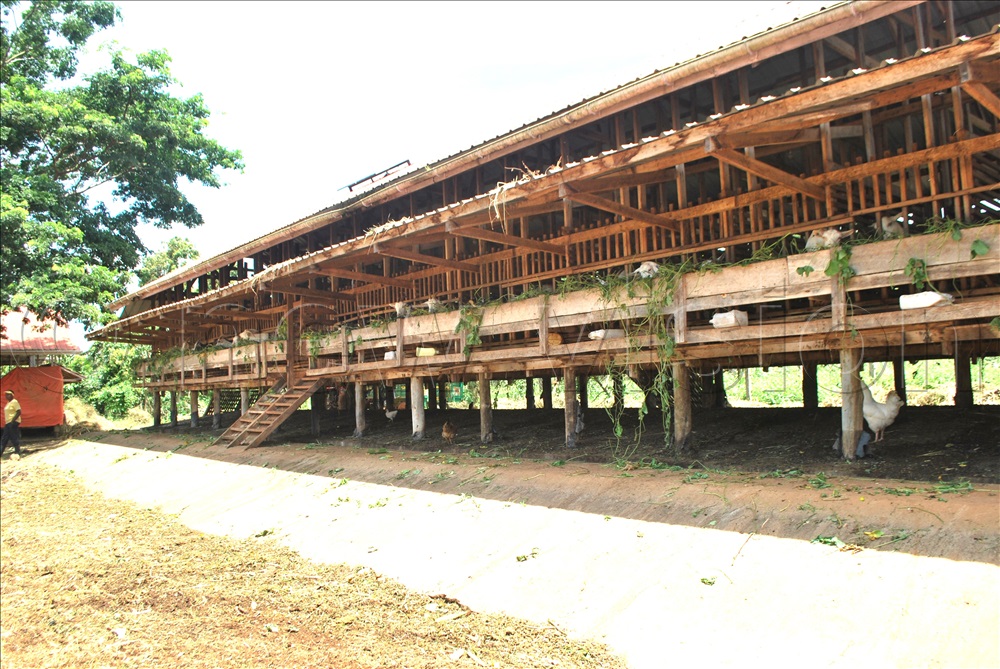By Jovita Mirembe
Purity Mbae Musyoka had never thought of starting a dairy goat farm until she learnt that her children were reacting to cow’s milk.
Mbae who is the operation manager and one of the proprietors of Mashambani Diary Goat farm located in Banga village Mpata sub-county in Mukono District, says that whenever she used to give cow milk to her children, they reacted to it so she decided to try giving them goat’s milk.
She says that luckily enough her mother-in-law who lived in Kenya reared goats and offered to give them goat’s milk free of charge.
“However, it was tiresome journeying for milk from Uganda to Kenya and back, my husband and I then thought of buying one dairy goat to supplement family nutrition,” she says.
In the following three years, we bought three female goats because this one was lonely and within five years we had six goats of which one was a male that we bought from South Africa.
The milk which was produced by the female goats was a lot that we couldn’t consume alone as a family which forced us to look for people who would buy it hence the birth of Mashambani Diary Goat farm.

“The farm presently has 300 goats of which 200 are female. The female goats produce 70-120 litres per day and the milk is sold to supermarkets and individuals at a cost of sh8000 per litre,” Mbae said.
Starting the farm
In 2016 my husband Kithinji Musyoka and I bought a female goat at sh200,000 and in the following year we bought another female goat from a veterinary doctor called Fred Sengendo at sh200,000.
After some time, we bought more three goats, two at sh270,000 each and one at sh320,00 because it was pregnant. Our capital investment to start the goat farm was sh1.26m.
After some time the goats gave birth to a kid each which sparked off the domestic dairy goat rearing into a commercial dairy goat farm.
Unfortunately, within six months we lost 100 goats of the 124 goats we had due to diseases.
This was a big setback to our business but we didn’t give up. We got to know that dairy goats are so prone to diseases which come from living in water. A bad foothold can cause a goat to slip, and when a goat falls in water it is more vulnerable to catching bacteria.
Here we learnt that we should build a goat shelter which is well-lit with natural lighting and suitable ventilation. This goat shelter needs to be free from streams, particularly if it’s at the ground level.
A mud floor at ground level is the best option because it doesn’t attract dampness as the concrete floor does. However, building a wooden floor when the goat shelter is elevated or slightly slanting to prevent water and urine stagnation is another good option.
Challenges
Mbae says that there are several challenges in dairy goat farming which include; scarcity of feed resources, and limited size of grazing land among others.
She says that some of the common diseases affecting goats include, goat pox, salmonella infection, foot and mouth disease, brucellosis, and tuberculosis among others which can be treated by a professional veterinary doctor.
Appeal to government
Mbae calls upon the government to support the dairy goat sector by increasing its dairy production by providing extension workers to train farmers on how they can increase the growth and production of their feed and fodder for their goats.
Feed in animal rearing is food given to domestic animals, especially livestock, in the course of animal husbandry from cereal grains and their by-products which include barley, corn, oats, rye, wheat, high-protein oil meals or cakes (soybean, canola, cottonseed, peanut [groundnut]), and by-products from processing of sugar beets, sugarcane, fodder includes Grass, dried hay, straw.
Since dairy goat farming is still young in Uganda, it needs to be boosted by training farmers in the livestock sector to include dairy goats on their farms and people who love starting dairy goat farming to learn how best they can profit from it.
Since dairy goat milk is more nutritious than cow milk, it has a bigger market.
Curbing scarcity in feed resources
Mbae said that to curb the scarcity of feed resources, farmers in dairy goat rearing need to grow their pasture to make sure they have enough feed for their goats. When a dairy goat gets enough feed, it increases its milk production.
In line with this, I have grown 25 archers of mixed pasture which my goats feed which has helped my goats to produce a lot of milk.
The Resilient African Feed and Fodder Systems ( RAFFS) project which is a pilot project in Uganda, Kenya, Somalia, Nigeria, Zimbabwe and Cameroon has helped farmers in those countries to increase their feeds in their feed and fodder sector.
Plans
I hope to have one of the biggest dairy goat farms in East and Central Africa in the next 10 years which will be producing more than 200 litres per day.
LEAD PHOTO CAPTION: Purity Mbae Musyoka feeding her goats. Photos by Jovita Mirembe





